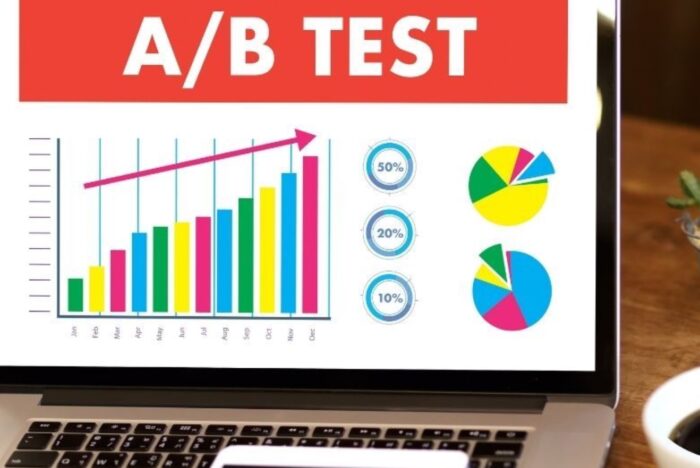
Promoting your business through Google Ads requires more than just following the right strategy. Even if your ad is seen by many people, it will not be effective if the text is not interesting.
As they say, “people love with their ears”, and in online advertising, this means that you need to write the best copy possible. Highlight the main details, points of interest, and unique characteristics of your product to capture the user’s attention.
Crafting high-quality advertising copy can be challenging, especially when you’re limited to a certain number of characters. You need to convey important information and entice the customer in just a few words.
There is no definitive guidebook on Google Ads management or specific rules to follow. However, this article will provide you with some helpful tips to improve the effectiveness of your advertising.
1. Know your target audience
Understanding your target audience is vital for creating effective Google Ads copy. You should aim to reach people who are most likely to be interested in your product or service, rather than everyone. Targeting the right audience will not only improve your ad’s performance, but it will also reduce unnecessary clicks and expenses.
It’s not enough for your target audience to simply see your ad – they need to be interested in it. When crafting your Google Ads copy, it’s important to consider the unique characteristics and interests of your target audience. For example, if you’re selling plus-size clothing, your target audience is not just anyone who wants to buy clothes, but specifically individuals who wear larger sizes. To effectively reach and engage with this audience, your copy should be tailored to their needs and preferences. Take the time to research and understand your target audience, and create a copy that speaks directly to them.
If you’d rather trust your advertising to professionals with high standards, go here https://uawc.agency/google-ads-management/. At UAWC, we know how to make your Google Ads work.
2. Use attention-grabbing headlines
Your headline is the gateway to your offer, and it should communicate the most important information about your product. Its primary goal is to entice users to click, ultimately leading to profit. Thus, a powerful headline is essential to your success.
However, it’s important to ensure that your title is truthful and doesn’t make false claims about your product. Instead, focus on highlighting unique features that will interest your potential clients. For example, if you offer clothing for plus-size individuals, make sure to specify this in your headline. Additionally, you can add a prefix such as “from the manufacturer” or “from the designer” to differentiate yourself from the competition.
Avoid using generic headlines that users have seen before. These types of headlines won’t grab their attention, even if your offer is distinct. Instead, come up with something fresh and innovative that stands out from the crowd.
3. Focus on benefits, not features
When creating Google Ads copy, it’s essential to describe your offer in a way that stands out from the competition. Rather than simply listing the features of your product, focus on communicating its benefits. This is especially important because users are presented with numerous options in their search results, and they are already aware of the basic functionality they require. Your job is to catch their attention and demonstrate why your product is superior.
For example, let’s consider the case of plus-size clothing. You could list all of its features, such as its attractiveness, comfort, and suitability for larger body types. However, a more effective approach is to emphasize the benefits, such as the high-quality materials used or the affordability of the clothing. This type of detail highlights what sets your product apart from others in the market.
Of course, it’s still crucial to mention the functions of your product to ensure it’s a good match for users. This will help prevent wasted clicks on your ads. However, it’s important to make the benefits the primary focus of your ad copy, with features taking a secondary role. By doing this, you’ll be more likely to capture the attention of potential customers and convert clicks into sales.
4. Use action-oriented language
In your Google Ads, use words that motivate people to choose your product. Action-oriented phrases like “buy now,” “learn more,” and “call now” can encourage users to take action. These phrases can capture users’ attention and prompt them to click on your ad to learn more about your offer.
5. Highlight your unique selling proposition (USP)
Your unique selling proposition (USP) is am important element of your Google Ads copy. Without a USP, your offer will appear no different from your competitors’ and potential clients may overlook you. To stand out, you must identify and highlight your USP, which may include the uniqueness of your product or service, as well as special pricing or terms of cooperation. When creating a business, it’s important to consider how you’ll differentiate yourself from the competition, and include this in your Google Ads copy. Avoid blending in with everyone else and strive to be distinctive.
6. Keep it concise
Be concise. People do not read your ads to enjoy your eloquence and writing skills, and users won’t want to read a long description of your offer. Keep your Google Ads copy neat and succinct, using keywords and emphasizing the main points. Avoid writing lengthy text that may obscure crucial information. Ensure that everything important can be conveyed at a glance, without needing to read the ad.

7. Use social proof
Leverage social proof. Buyers trust other buyers. No matter how many benefits you list for your offer, potential clients may still have doubts. However, if they read numerous positive reviews or customer testimonials, they are more likely to believe in the advantages of your product. Include this social proof in your Google Ads copy, and aim to gather only positive feedback.
8. Incorporate a call-to-action (CTA)
Include a clear call-to-action (CTA). A CTA can significantly boost your sales by prompting potential customers to take action. Use various tactics to encourage customers to purchase your product, such as adding extra buttons or using persuasive language like “buy” or “choose.” Incorporating a strong CTA can help guarantee your earnings.
9. A/B test your copy
Conduct A/B testing on your copy. The goal of testing is to determine which elements are effective for promoting your product or service. Experiment with different Google Ads copy options and identify the most optimal one. It’s important for your copy to generate not only clicks and site visits, but also sales and revenue.
Use the testing data to optimize your entire advertising campaign, combining the best-performing elements from different copies to achieve the best results.

10. Create ads that deliver results
Craft ads that drive results. Give your Google Ads copy the same level of attention as your promotion strategy. The text content is the first thing potential customers see, so make sure it resonates with them and generates positive feedback. Stand out from your competitors by emphasizing your unique selling points and differentiating yourself in the market.
11. Monitor your Ads’ Performance
Ad Strength
Ad Strength provides feedback to improve your responsive search ads by identifying effective messaging for customers. This tool can also help you create more effective ads by identifying areas for improvement, such as headlines, descriptions, and ad components. Increase Ad Strength to “Good” or “Excellent” using action items. Add Ad Strength column to ad reporting for quick improvement focus. By using the Ad Strength feature, you can gain valuable insights to help optimize your ads and increase their performance.
Campaign-level asset reporting
Campaign-level asset reporting highlights top-performing assets to optimize ads. Replace “Low” performing headlines and descriptions with “Best” performing ones and compare against “Good” performers. By analyzing the data from campaign-level asset reporting, you can make informed decisions to optimize your ads and improve your overall ad performance.













